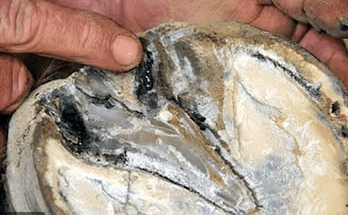
Thrush is a disease that affects the Horse’s feet, the frog, the cleft of frog and the sole of the hoof. The horse’s feet become very smelly and there is usually a black tarry discharge from around the crevices of the frog and the cleft of frog. Thrush is a bacterial infection caused by a bacterium known as Fusobacterium Necrophorum, which thrives best in near to anaerobic conditions that are generally caused by the horse standing for long periods in wet or muddy conditions in the paddock or standing for long periods on dirty bedding.
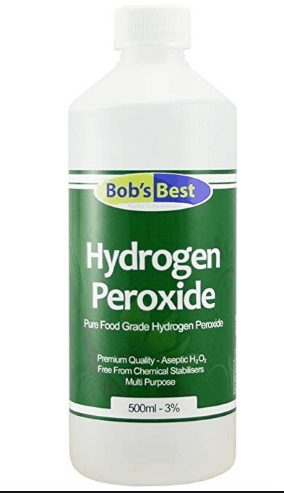
To Treat Thrush in Horses, you will need to be diligent in your management and practices when caring for your horse. The horse’s feet will need to picked out at least twice daily and cleansed with a solution of Hydrogen Peroxide, before being towel dried and sprayed with a solution of Iodine to control the disease. The horse’s bedding must be kept spotlessly clean, and the horse will respond much better to treatment if he is out in a dry paddock by day and only stabled at night. Let us look at the causes, symptoms and treatment of thrush in horse’s feet in more detail.
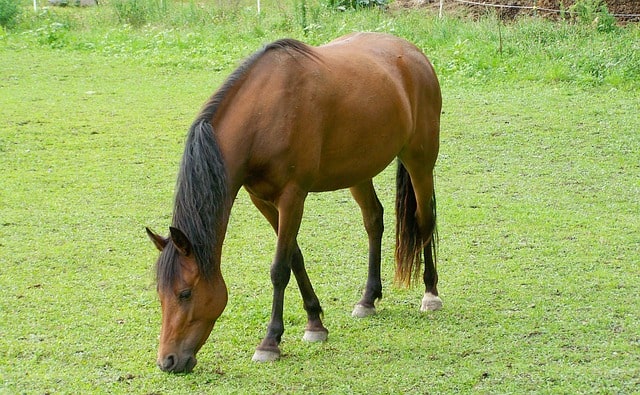
Causes of Thrush in Horses
Thrush in the horse’s feet as previously mentioned, is caused by a bacterium, Fusobacterium Necrophorum, which thrives in near to anaerobic conditions. Therefore, if your horse is standing in a muddy field for long periods or standing on dirty bedding, this provides the perfect breeding ground for thrush to take hold.
Symptoms of Thrush in Horses
- The first symptom of thrush will be the unpleasant odour from your horse,s feet.
- There is also a black tarry discharge from around the crevices of the Frog and the cleft of frog.
- If the Thrush has been ongoing for a while, the structures of the foot, such as the frog and sole, soften and crumble.
- In long standing cases, the cleft of frog will split, and this provides an excellent environment for the thrush to thrive.
- In very severe cases thrush can penetrate the sensitive areas of the foot causing lameness.
Treatment of Thrush in Horses
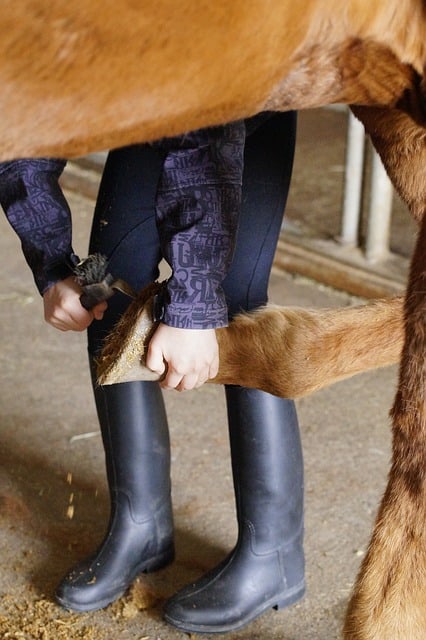
- Firstly pick out the horses feet carefully and remove all debris with an old dandy brush.
- Next scrub the foot with a solution of Hydrogen Peroxide, this will help to lift all the dirt and infection that are hiding in the crevices of the horses foot.
- Repeat the Hydrogen Peroxide application until the solution runs clear.
- Use an old towel to dry off the excess moisture and then spray the infected areas with a solution of Iodine spray.
- Repeat this process at least twice daily.
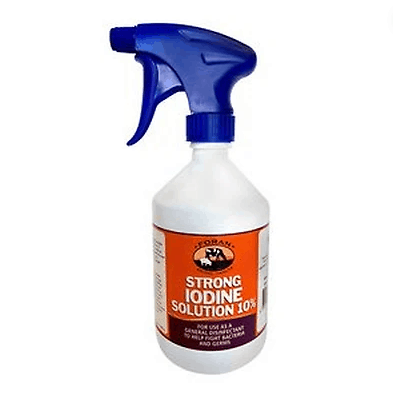
Prevention is Better than Cure.
Always remember prevention is better than cure, with that said here are some practices you can put in place to ensure your horse’s feet remain healthy.
- Pick your horses feet out carefully at least twice daily.
- Avoid leaving your horse in very wet conditions for long periods.
- Make sure bedding is kept clean and dry, dirty bedding is your enemy.
- Some horses are prone to thrush, make sure that you keep a separate hoof pick for this horse as this infection can spread.
- If your horse is prone to thrush, you will need to keep a close eye on his management to keep it under control. This type of horse may be better off in a dry paddock by day, and only stabled at night.
- Involve your farrier to ensure your horses feet are well balanced, this will allow the horse to have adequate frog pressure to keep the feet healthy.
- I have personally found that when a horse prone to thrush, they are usually easier to manage on a clean shavings or sawdust bed.
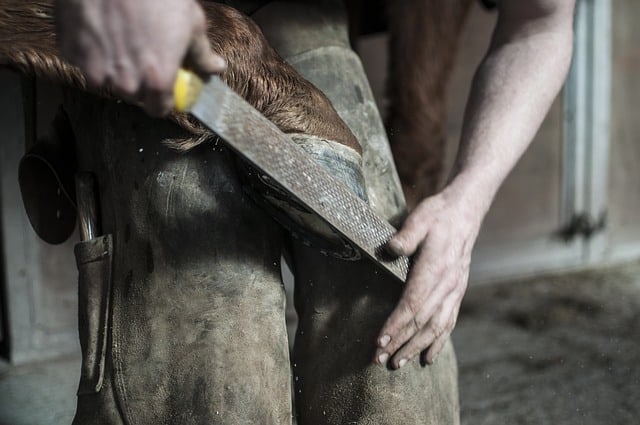
The control of a Thrush infection is all about management, ensure that if your horse is prone to it, that he is kept active as much as possible, so out in a dry paddock by day and stabled at night. Ensure all bedding is kept very clean, that your horses feet are picked out well, and any sign of a thrush infection is treated immediately.
If you are still having a problem with a thrush infection despite having a good management protocol in place, ask your veterinary surgeon for some advice.
